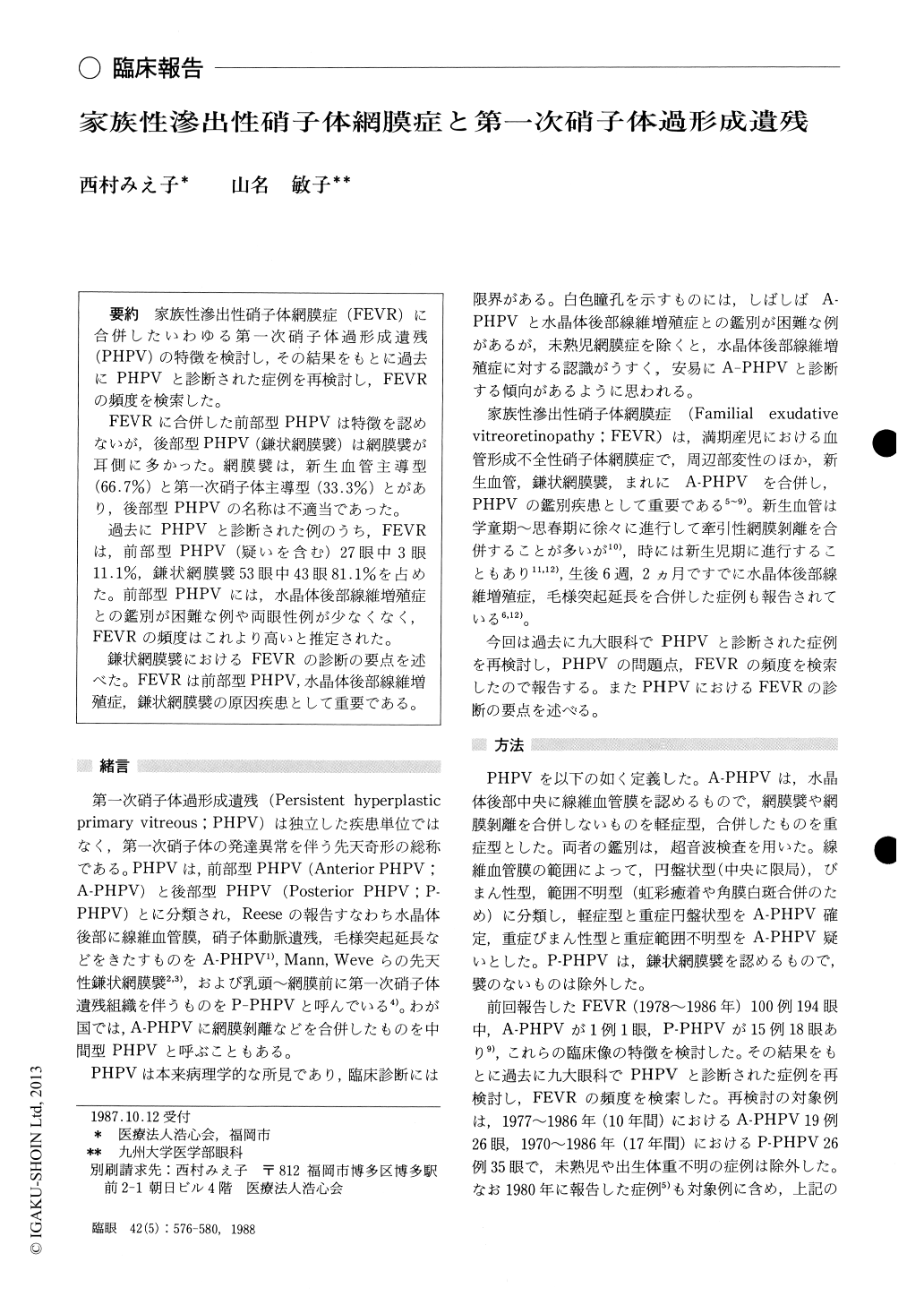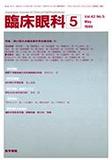Japanese
English
- 有料閲覧
- Abstract 文献概要
- 1ページ目 Look Inside
家族性滲出性硝子体網膜症(FEVR)に合併したいわゆる第一次硝子体過形成遺残(PHPV)の特徴を検討し,その結果をもとに過去にPHPVと診断された症例を再検討し,FEVRの頻度を検索した.
FEVRに合併した前部型PHPVは特徴を認めないが,後部型PHPV (鎌状網膜襞)は網膜襞が耳側に多かった.網膜嚢は,新生血管主導型(66.7%)と第一次硝子体主導型(33.3%)とがあり,後部型PHPVの名称は不適当であった.
過去にPHPVと診断された例のうち,FEVRは,前部型PHPV (疑いを含む)27眼中3眼11.1%,鎌状網膜襞53眼中43眼81.1%を占めた.前部型PHPVには,水晶体後部線維増殖症との鑑別が困難な例や両眼性例が少なくなく,FEVRの頻度はこれより高いと推定された.
鎌状網膜襞におけるFEVRの診断の要点を述べた.FEVRは前部型PHPV,水晶体後部線維増殖症,鎌状網膜襞の原因疾患として重要である.
Familial exudative vitreoretinopathy (FEVR) was associated with falciform retinal fold in 18 eyes, 15 cases, and with advanced form of anterior hyperplastic primary vitreous (PHPV) in 1 eye, 1 case. The falciform retinal fold was located in the temporal fundus in 16 eyes (89%).
The origin of the fold was either neovascular type (12 eyes) or primary vitreous type (6 eyes). In neovascular type, a fibrovascular membrane extended into the temporal equator or retrolental space attached to the fold. In 9 eyes, strand of persistent primary vitreous was also attached to the fold.
In primary vitreous type, strand of persist-ent primary vitreous was attached to the top of the fold. Fibrovascular membrane was either absent orinconspicuous. In the present series, there was no instance of optic disc anomaly nor generalized malformation except congenital heart disease in 3 cases.
We re-examined earlier cases diagnosed or suspected as PHPV. Out of 53 eyes with posterior PHPV, or falciform retinal fold, we could detect 43 eyes (81%) with FEVR. Out of 27 eyes with ante-rior PHPV, we could detect 3 eyes (11%) with FEVR.
The findings show that FEVR frequently under-lies apparent anterior PHPV, retrolental fibro-plasia and falciform retinal fold in full-term infants. Posterior PHPV is a misnomer for falcifor-m retinal fold due to FEVR.
Rinsho Ganka (Jpn J Clin Ophthalmol) 42(5) : 577-580, 1988

Copyright © 1988, Igaku-Shoin Ltd. All rights reserved.


